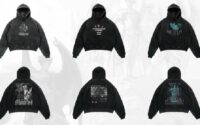Barriers Clothing
Barriers Clothing serves as a vital component in various sectors, providing protection against contaminants, ensuring safety, and maintaining hygiene standards. From healthcare facilities to food processing units, barriers clothing plays a crucial role in safeguarding both workers and products.
Types of Barriers Clothing
Barriers clothing comes in two main types: disposable and reusable. Disposable garments offer convenience and are often used in environments requiring frequent changes to prevent cross-contamination. On the other hand, reusable barriers provide durability and are suitable for applications where longevity is essential. These garments are made from a variety of materials, including polyethylene, polypropylene, and non-woven fabrics.
Applications of Barriers Clothing
In the healthcare sector, barriers clothing is indispensable, worn by medical professionals during surgical procedures, patient care, and handling hazardous materials. Similarly, in the food industry, workers don specialized garments to maintain cleanliness and prevent foodborne illnesses. Moreover, cleanrooms and laboratories utilize barriers clothing to control particulate contamination and maintain sterile environments.
Benefits of Barriers Clothing
The primary benefit of barriers clothing is its ability to protect wearers from various hazards, including chemicals, pathogens, and particulates. Additionally, these garments enhance safety in the workplace, reducing the risk of accidents and injuries. Furthermore, compliance with regulatory standards is ensured, promoting adherence to industry guidelines and protocols.
Challenges in Using Barriers Clothings
Despite its advantages, barriers clothings poses certain challenges. Comfort and mobility can be compromised, especially in garments that restrict movement or cause discomfort over prolonged use. Cost considerations also come into play, as high-quality barriers clothing may entail significant expenses for organizations. Moreover, the environmental impact of disposable garments raises concerns regarding sustainability and waste management.
Innovations in Barriers Clothings
To address these challenges, the industry is witnessing innovations in Barriers Hoodie. Advanced materials, such as breathable fabrics and moisture-wicking technology, are being incorporated to enhance comfort and usability. Additionally, sustainable solutions, including biodegradable materials and recycling programs, are gaining traction, reducing the environmental footprint of barriers clothings.
Best Practices for Using Barriers Clothings
To maximize the effectiveness of barriers clothings, proper selection, fitting, and maintenance are essential. Garments should be chosen based on the specific requirements of the application, ensuring the appropriate level of protection and comfort. Fitting should be tailored to individual users to prevent gaps or exposure. Furthermore, regular inspection, cleaning, and disposal procedures should be followed to prolong the lifespan of barriers clothings and minimize risks.
Future Trends in Barriers Clothings
Looking ahead, the future of barriers clothings is marked by advancements in technology and customization. Integration of smart features, such as temperature monitoring and bio-sensing capabilities, will enable real-time data collection and analysis, enhancing safety and productivity. Moreover, customization for specific industries and applications will result in tailored solutions that meet the unique needs of users, further optimizing performance and usability.
Conclusion
Barriers clothings plays a critical role in ensuring safety, hygiene, and compliance across various industries. While facing challenges such as comfort issues and environmental concerns, ongoing innovations are driving the evolution of barriers clothings towards enhanced performance and sustainability. By adopting best practices and embracing future trends, organizations can effectively mitigate risks and maximize the benefits of barriers clothings.
Related Posts

Understanding Yellyard Clothing: The Ultimate Style Guide

Badfriend Pants: The Troubling Trend of Toxic Friendships
